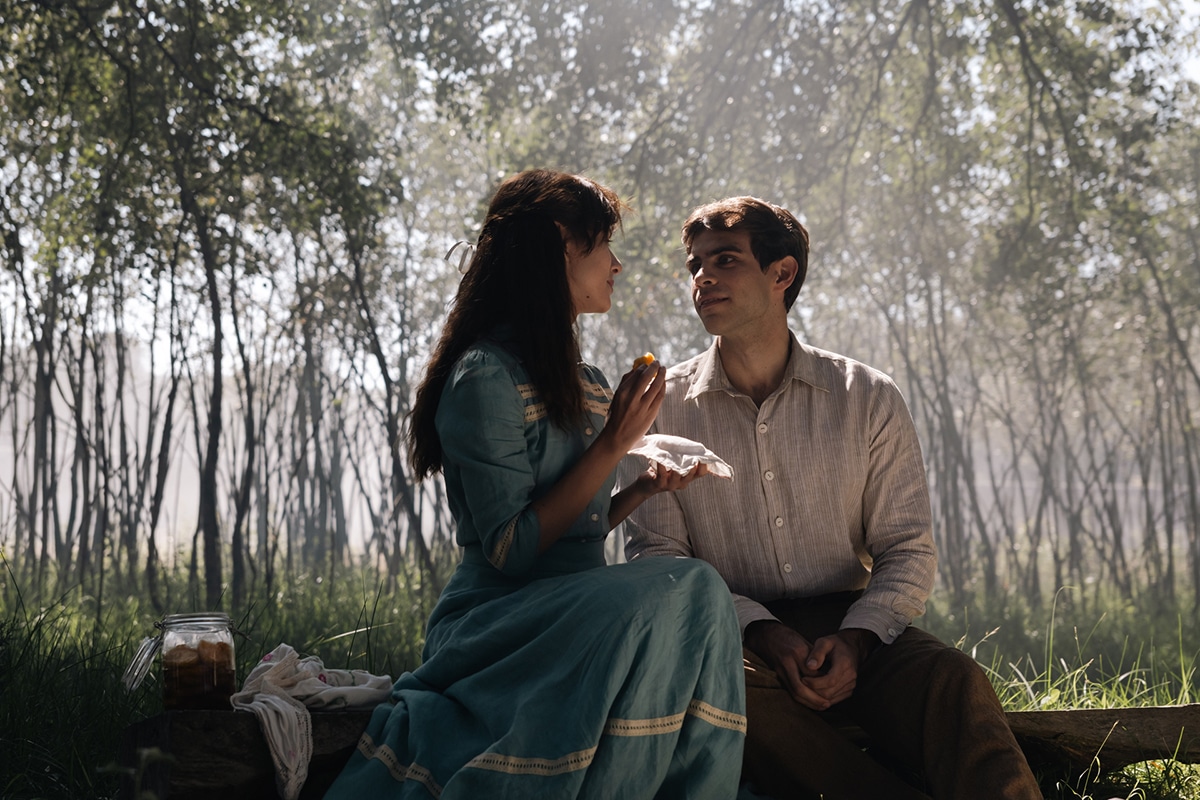First published in 1989, Laura Esquivel‘s novel Como Agua para Chocolate (Like Water for Chocolate) sold over four million copies in 35 languages and was adapted into a film in 1992. Now, a little more than three decades later, HBO is bringing this beloved work to the small screen in an intoxicating and exuberant reimagining in Spanish. Directed by Mexicans Julian de Tavira (Reina Roja) and Ana Lorena Perez Rios (El Hotel de los Secretos), and executive produced by Salma Hayek Pinault (Frida), the six-episode adaptation is introducing new audiences to the historical melodrama of the De La Garza family.
What is Como Agua Para Chocolate About?
Set in Coahuila, Mexico, in the midst of the Mexican Revolution, the limited series tells the story of Tita De La Garza (Azul Guaita), the youngest of three sisters, born with a mystical gift for cooking. From an early age, Tita can tell that her mother, the aristocratic widow Mamá Elena (Irene Azuela), is less fond of her than her sisters, the conservative and sour Rosaura (Ana Valeria Becerril) and the budding warrior Gertrudis (Andrea Chaparro).
Tita is in love with her childhood sweetheart, Pedro Muzquiz (Andres Baida), and he feels the same for her. However, the two are kept apart by a cruel family tradition: as the youngest daughter, she is obliged to devote her life to caring for her mother. Mamá Elena is cold-hearted and runs her estate (and family) with an iron fist, making no exception so Tite must give up her own happiness.
Then the unexpected happens, Pedro decides to marry Rosaura, the eldest sister of the family. The young man accepts this empty engagement, believing it is his best chance to remain close to his beloved. Of course, things turn out to be far from simple, and the love triangle binds the three of them to a tortuous and long-lasting closeness.
Como Agua Para Chocolate is a surreal story about a forbidden and everlasting love, but it is also much more than that. Through Tita’s struggle, the story explores family obligations, gender roles, independence, and the power of gastronomy. “The story, set in Revolutionary times, also speaks of another kind of struggle: that of women fighting to control their own destiny,” the series’ executive producer, Hayek Pinault told El Pais.
The Kitchen as a Laboratory of Alchemy
For the uninitiated, Esquivel’s novel tenaciously defends the transformative power of the kitchen. Fortunately, the HBO adaptation respects this idea and strives to portray the kitchen as a place of birth, inheritance, nourishment, feminine power, and revolution. There is almost no scene in which there is not someone eating or preparing a meal, and some of the most powerful sequences in the series have to do with the kitchen and its spells.
Tita puts all her soul into the kitchen. She was born “between stoves,” and then raised by Nacha (Ángeles Cruz), the head cook of the family ranch. As it happens in the novel, and in a display of magical realism, the young woman begins to transmit her emotions to the food she prepares. For example, through one meal, she expresses her romantic illusions to Pedro. Through another, she expresses her sorrow to the guests at her sister Rosaura’s wedding. “Whether it was joy or sorrow, everything was infused with her. It was as if Tita were another ingredient,” the narrator clarifies.
From the ingredients to the preparation to the presentation at the table, the food is part of the narrative and the HBO series brings it to life on screen in dazzling detail. Underneath it all, there is an interesting vindication of cooking. Far from representing a form of female domination or confinement, cooking in Como Agua Para Chocolate is a symbolic expression of resistance, emotional catharsis, and freedom. Throughout the romantic drama, Tita’s kitchen transforms the world around her, as if it were an alchemical laboratory.
From Book to Screen
Although there have been important reinterpretations of Laura Esquivel’s work, ranging from a film adaptation to a Broadway musical, the television version of Como Agua Para Chocolate, in its first episodes, proves to be one of the most faithful and most elaborate. Six years in the making, the Spanish-language drama captures the essence and complexity of the original text and still knows how to pull off surprises.
One of the smartest decisions by lead writer Francisco Royo (Serve & Protect) is to take advantage of the extended television format to develop the backdrop of the Mexican Revolution. The show offers a deeper understanding of the De La Garza family, traditions, and time period. Thanks to the extended screen time, the story feels more organic, more detailed, and more leisurely than the beloved 1992 feature.
In addition to having outstanding actors, especially Irene Azuela as Mamá Elena, Como Agua Para Chocolate is also aesthetically impressive. In this sense, the visual language of directors Tavira and Pérez transports the audience to Mexico in the last century. Shot in Tlaxcala and Mexico City, the HBO original series takes enormous advantage of the landscape and rustic scenery. Throughout, the meticulous care taken to create a convincing period setting is evident. HBO’s reimagining, the first in more than 30 years, feels beautifully familiar, and in turn, gives rise to a sense of freshness and vigor. With a dreamlike, folkloric air, the Mexican melodrama does more than enough to make the familiar story of the De La Garza women worth revisiting. In many ways, HBO’s Como Agua Para Chocolate is the adaptation we always deserved and never imagined how much we needed.

Como Agua Para Chocolate airs on Sunday nights on HBO and streams on Max.

